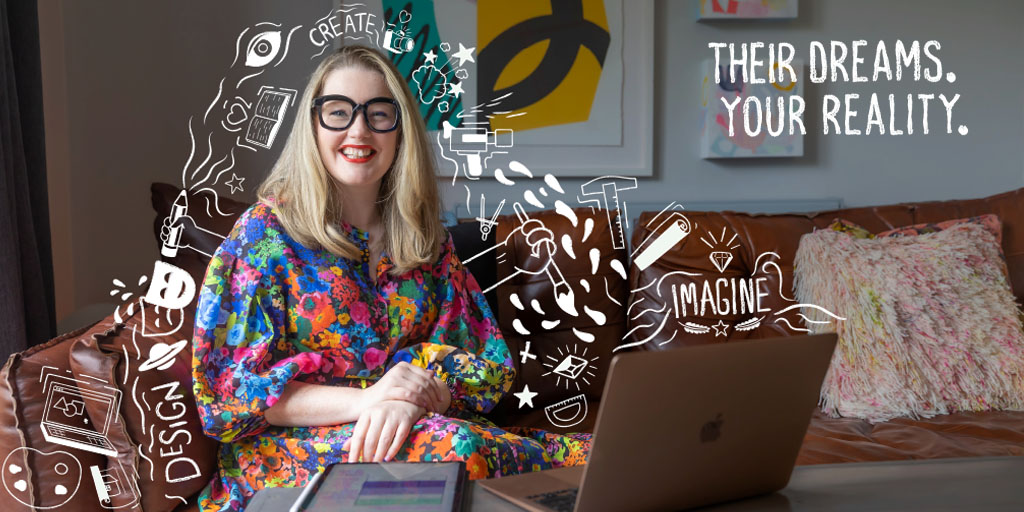
We spoke to Role Model and active volunteer Sharon Murray, who currently works at Ebow as Design Director.
How has participating in JA impacted you?
It is more important than ever that we as business leaders, champion change & diversity, challenge gender norms and inspire young minds. The JA programmes open up the world of work to young people, just at the age where they are beginning to develop their aspirations and ambitions. JA has created a platform for people in industry to educate students, in my case, about the power of design in the world around them. By talking to students in this way, it helps to break down stereotypes and preconceptions, and in this instance, actively demonstrates that there is a really diverse range of creative careers available, and ultimately shows them that they can be the leaders of tomorrow. It’s been a privilege and an inspiration to hear from young voices, and be in a position to elevate their ambition.
How do you think it impacted the students?
I firmly believe that the only way we can redress, and ultimately eliminate any biases in leadership roles is through empowering our youth. Community and education driven programmes like JAs, give young people a chance to share with one another and really speak their minds. The creativity, openness and honesty displayed in the groups I spoke with were both humbling and invigorating. Our own futures can actually be brighter if we support our young people and inspire them to shine their own light. I have no doubt that these programmes inspire the participants and give them the confidence to explore different career paths, be that creative roles, entrepreneurship or STEM fields.
Why would you recommend companies to get involved with JA?
I would wholeheartedly encourage companies to join me in supporting this programme in this new school year by nominating volunteers to participate, especially those in female leadership positions. It’s essential that strong role models are not just visible at boardroom tables.
Was there anything that surprised you about the experience?
My first classroom visit started with the question “what do you want to be when you are older?”. The response unearthed a strong gender bias. Even early on in their education, young adults have already started to define career opportunities as male and female. As part of the workshop, students were encouraged to choose a design-related career through a fun quiz. Joyously, I ended up with a room full of female game designers and architects, and male fashion designers and interior designers. Their titles, emblazoned on badges they designed for themselves, generated group debate, raised questions, and most crucially set about challenging embedded norms. It’s an amazing way to create momentum for change. It was really liberating to watch.
